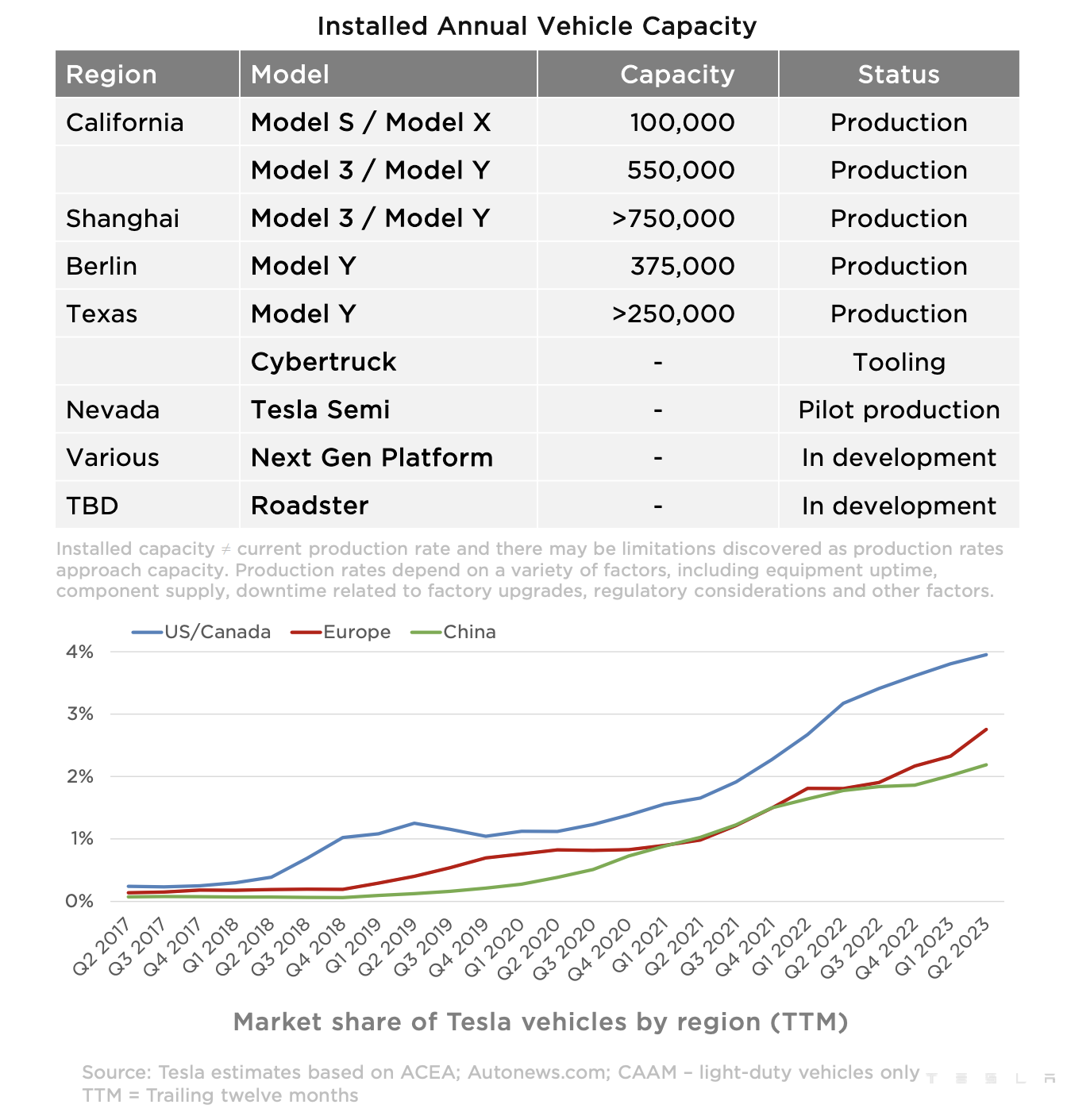
If anyone is concerned about demand for Tesla vehicles leveling off or dropping, it certainly isn’t Tesla. One example of that is what Tesla is now requesting from the authorities in Germany — to significantly expand Giga Berlin (the company’s already massive German factory).
There are multiple aspects to this, but let’s start with the production capacity since that’s mostly what matters in the end and my headline is a bit confusing. Given the situation, I just wasn’t sure how to phrase it. As it’s currently approved, Tesla Giga Berlin has a production capacity of half a million vehicles a year. If this request is approved, that will go up to one million. So, you could say Tesla is aiming to double its production capacity in Germany. However, at the moment, Tesla’s latest shareholder report indicated a production capacity of 375,000 vehicles a year. So, using this number, you could say that Tesla is aiming to almost triple its current production capacity. As Simon Alvarez of Teslarati points out, even Volkswagen’s Wolfsburg factory has a production capacity of “just” 800,000 vehicles a year. Will Tesla really expand production at its German factory to the extent that it surpasses Volkswagen’s Wolfsburg factory? We’ll see.
Of course, if you followed the initial drama of Giga Berlin, you know that there were protests for a long time about the factory from certain “environmental” groups and that the factory was limited in its production capacity by very strict water usage requirements. There was concern for a while that the Tesla factory wouldn’t be able to scale up as initially planned because of all this. So, you may be wondering, how could Tesla get approval to double its permitted production capacity? Tesla found a way around the water issue — it plans to recycle water at the factory.
According to reporting from Reuters, Tesla’s aim is for the expansion requests to be operation in early 2024. “These include extensions or changes to existing parts of the facility like water recycling, the press shop and paint shop, as well as constructing new elements such as a material storage facility, the document said. […] For the expansion, Tesla has committed to not using any additional water capacity, instead recycling the 1.4 million cubic metres of water it is licensed to use.” The company plans to expand battery cell production capacity as well as vehicle production capacity at the factory.
Tesla may be aiming for all of this to get approved quickly and get into operation in early 2024, but note that local residents “have until mid-September to file objections to the latest proposals.” We’ll see what happens with that.
I don’t like paywalls. You don’t like paywalls. Who likes paywalls? Here at CleanTechnica, we implemented a limited paywall for a while, but it always felt wrong — and it was always tough to decide what we should put behind there. In theory, your most exclusive and best content goes behind a paywall. But then fewer people read it! We just don’t like paywalls, and so we’ve decided to ditch ours. Unfortunately, the media business is still a tough, cut-throat business with tiny margins. It’s a never-ending Olympic challenge to stay above water or even perhaps — gasp — grow. So …
Sign up for daily news updates from CleanTechnica on email. Or follow us on Google News!
Have a tip for CleanTechnica, want to advertise, or want to suggest a guest for our CleanTech Talk podcast? Contact us here.
Former Tesla Battery Expert Leading Lyten Into New Lithium-Sulfur Battery Era:
CleanTechnica uses affiliate links. See our policy here.





